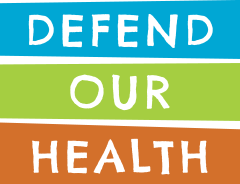We Won! Federal Court Overturns Trump EPA Decision to Hide Chemical and Plastic Industry’s Ongoing Uses of Asbestos
December 28, 2020 | Legislative Campaigns, Toxic-Free Products | Tags: ADAO, Asbestos, Defend Our Health, EPA, PVC, Toxic
Just in time to brighten the holiday season and New Year, a federal judge ruled in our favor, declaring the US EPA’s failure to collect information necessary to regulate asbestos “arbitrary and capricious.” Explaining why this is exciting takes some back story.
Most of us know that asbestos is bad for you. It’s a potent carcinogen, causing especially devastating forms of lung cancer. In fact, the failure of the US EPA to adequately protect us from asbestos helped drive Congress to pass reforms to the nation’s chemical law, the Toxic Substance Control Act (TSCA), in 2016.
So, when the US EPA set out to try again to regulate asbestos under the reformed law in 2017, I figured that even Scott Pruitt and the Trump EPA couldn’t mess it up that badly. Boy, was I wrong.
The agency started the process by doing its best to blind itself to the continued uses of asbestos, refusing to use authorities granted to it by Congress to collect information from industry. Amongst many other oversights, Defend Our Health, along with Safer Chemicals Healthy Families and other advocates, demonstrated to the agency that more than four million pounds of asbestos had been imported into the United States, but never reported to the agency, by the chemical industry (more on this in a moment).
We joined our colleagues at the Asbestos Disease Awareness Organization (ADAO) in petitioning the EPA to modify its rules to require this, along with other uses of asbestos, be reported to the agency. EPA denied our petition, claiming it had adequate information on the uses of asbestos, even if its accounting was millions of pounds off.
ADAO, joined by Defend Our Health and other public health organizations, sued the EPA, asking the court to overturn the agency’s denial of our petition and order the agency to collect additional information on asbestos use. A coalition of eleven state attorneys general, including Maine’s Aaron Frey, filed a similar case against the agency, which was consolidated with our case before Federal Judge Edward J. Chen. On December 22, Judge Chen issued summary judgement in our favor, calling out the Trump EPA for its “unwillingness to act” and ordering it to modify its rules to collect much of the information we sought.
Asbestos and Toxic PVC
So, given all we know about the dangers of asbestos, you may be wondering what is driving its use. The answer is surprising: plastics. Specifically, polyvinyl chloride, PVC, or sometimes referred to as just “vinyl.” Identified in consumer products with the #3 recycling symbol, PVC is used in everything from shower curtains to water pipes to food packaging.
Producing PVC requires chlorine – lots of chlorine. Chlorine is predominantly produced by “Chlor-alkali” plants that separate the sodium and chlorine from salt water. One way of doing this, relying on technology over a century old, requires a giant permeable diaphragm constructed out of asbestos. In addition to requiring massive quantities of asbestos, these old-school plants consume absurd amounts of electricity. Newer technologies, which don’t require asbestos diaphragms and which are substantially more energy efficient, have been nearly universally adopted in Europe. Yet, the US Chemical industry still relies on asbestos diaphragm plants for over half their chlorine production.
While the chemical industry likes to claim that its asbestos use is carefully done under conditions that limit exposure, the industry does not account for the conditions abroad under which asbestos is mined. Most of the four million pounds we found not being reported to the agency originated in Brazil, where miners and workers that refine, package and ship it are provided minimal protections, and suffer from nearly-always fatal mesothelioma, asbestosis, and other asbestos-linked illnesses at alarming rates, according to investigative reports.
(With the Brazilian mines closing, nearly all asbestos now comes from Russia. Russian producers, seizing on the Trump EPA’s lackadaisical regulatory approach to the carcinogen, started marketing their product as “Approved by Donald Trump.”)
In addition to its reliance on asbestos, there is good reason PVC is known as the “Poison Plastic,” with both its production and disposal associated with the generation of highly toxic dioxins. Additionally, to make rigid PVC flexible requires the addition of “plasticizers,” such as endocrine disrupting phthalates, which are not chemically bound and leach out of products over time. While Maine became the first state to ban phthalates in food packaging, they are still free to be used in PVC in other products.
Where from here?
While we are thrilled by Judge Chen’s ruling and are hopeful the EPA under the Biden administration will take action to rapidly implement it, we still have a lot of work to do on asbestos, toxic plastics like PVC, and making sure that our government is actually protecting us from hazardous chemicals.
You can help by staying informed and making sure you let officials know your concern. When shopping, keep in mind the wisdom of Grist’s Ask Umbra: “No vinyl, that’s final.”
